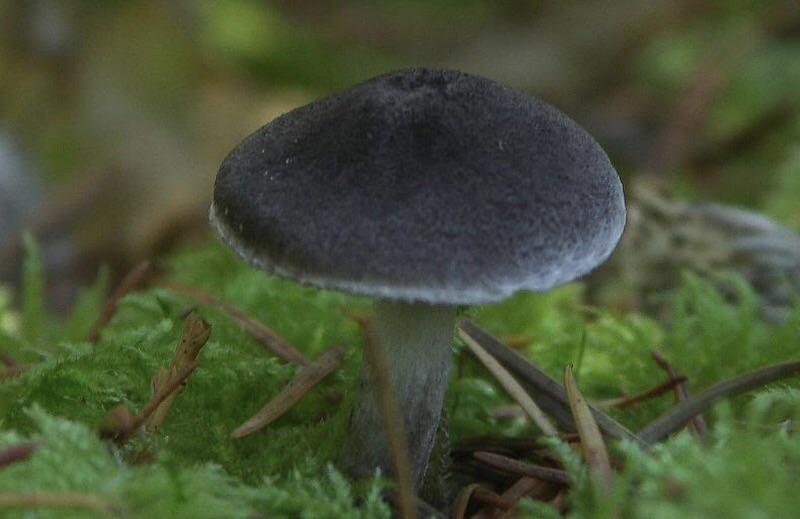When you think of Chernobyl, the image that likely comes to mind is a haunting one – a ghostly ferris wheel in Pripyat, eerily silent, rusted buildings overtaken by nature, and an invisible blanket of radiation that still lingers decades after the 1986 disaster. But in the cracks and crevices of this post-apocalyptic landscape, an unlikely hero has emerged: Cladosporium sphaerospermum, a fascinating black fungus that not only survives but actually thrives in radiation-soaked environments. Yeah, you read that right – this fungus eats radiation for breakfast, lunch, and dinner!
What Exactly is This ‘Radiation-Eating’ Fungus?
Cladosporium sphaerospermum is no ordinary mushroom. Discovered clinging to the walls of Chernobyl’s ruined No. 4 reactor, this fungus has a superpower that sets it apart: it feeds on radiation through a process called radiosynthesis. Similar to how plants use sunlight in photosynthesis, this fungus uses its high melanin content to absorb radiation and convert it into energy. It’s like the fungal version of a solar panel – but instead of light, it’s sucking up gamma rays and using them to power its growth.
Now, melanin is usually known as the pigment that gives color to human skin, eyes, and hair, as well as providing protection against UV rays. But in Cladosporium, melanin goes beyond defense. This fungus has figured out how to turn radiation into fuel – essentially feasting on something that’s deadly for almost every other form of life.
How Does It Actually Work?
Scientists have been digging into the secrets of Cladosporium sphaerospermum, and here’s where it gets even more mind-boggling. Inside the fungi’s cells, melanin absorbs the radiation and undergoes a chemical reaction that transforms this energy into something the fungus can metabolize. This process, which isn’t identical to plant photosynthesis but follows a similar concept, is what lets the fungus flourish in one of the most hostile places on Earth.
And here’s the kicker: research has shown that the fungus not only survives but actually grows faster in high-radiation environments. Studies published in scientific journals like PLOS ONE reveal that when Cladosporium is exposed to radiation, it seems to go into overdrive, growing more rapidly than in less radioactive conditions. It’s like radiation is its own special brand of fertilizer. This astonishing ability has shifted scientists’ understanding of extremophiles, or organisms that thrive in extreme environments, showing just how adaptive and resilient life can be.
A Potential Ally for Radiation Cleanup
With Cladosporium sphaerospermum’s radiation-feasting habit, scientists are exploring whether this fungus could help tackle one of the world’s biggest environmental headaches: radiation cleanup. Traditional methods of dealing with radioactive waste are expensive, dangerous, and only partially effective. But imagine if we could “plant” fungi like Cladosporium in contaminated areas and let them naturally absorb and neutralize radiation. The potential for this is huge, especially in areas like Chernobyl and Fukushima, where radiation levels remain hazardous.
While the idea may seem a bit sci-fi, it’s actually being researched. Scientists are testing how Cladosporium could be used in bioremediation, a process where living organisms are deployed to clean up environmental contaminants. If successful, this fungus could offer a natural, self-sustaining solution to decontaminate radioactive zones, potentially saving both time and money in areas that would otherwise remain uninhabitable for centuries.
From Chernobyl to Space: Fungi as Radiation Shields?
The space industry has also taken notice of Cladosporium’s unique talents. As we look toward long-term space travel and the goal of reaching Mars, one of the biggest obstacles for astronauts is the high radiation exposure in space. Earth’s atmosphere protects us from most cosmic radiation, but once we venture out, we’re at the mercy of radiation levels that could harm human health.
Enter Cladosporium. Scientists have sent samples of this fungus to the International Space Station to test its resilience against cosmic radiation. The findings have been encouraging: Cladosporium could be used to develop radiation-resistant materials for building space habitats. Imagine future Mars colonies with walls lined in fungal shields, protecting astronauts from cosmic rays. And who knows? The fungus could even provide an in-space food source with its radiation conversion capabilities.
Beyond Radiation – What Else Can This Fungus Teach Us?
Beyond radiation consumption, Cladosporium sphaerospermum has other tricks up its sleeve. This little powerhouse can tolerate extreme cold, high salt concentrations, and low pH levels, making it a sort of “super-fungus.” By studying how it manages to thrive in such hostile conditions, researchers hope to unlock new ways to enhance crop resilience, develop radiation-resistant materials, and even learn more about cellular adaptations that could be beneficial in biotechnology.
Scientists are investigating how genes from Cladosporium might one day be used to make crops more resistant to extreme weather. Imagine a future where crops can withstand severe droughts or grow in soil with high salinity – it’s like nature’s own version of superhero genetics.
A Glimpse into the Resilience of Life Itself
Cladosporium sphaerospermum reminds us just how adaptable life can be. In the face of overwhelming odds – radiation, isolation, a complete lack of human intervention – this fungus not only survives but actually thrives. It’s the ultimate story of resilience, adaptability, and, yes, a bit of fungal tenacity. Nature, as it turns out, has its own way of handling disasters – by creating life forms that can find opportunity in the most inhospitable places.
So, the next time you think about radiation, nuclear disasters, or even the harsh realities of space, remember: there’s a little black fungus that sees those challenges as just another day at the office.

Leave a Reply